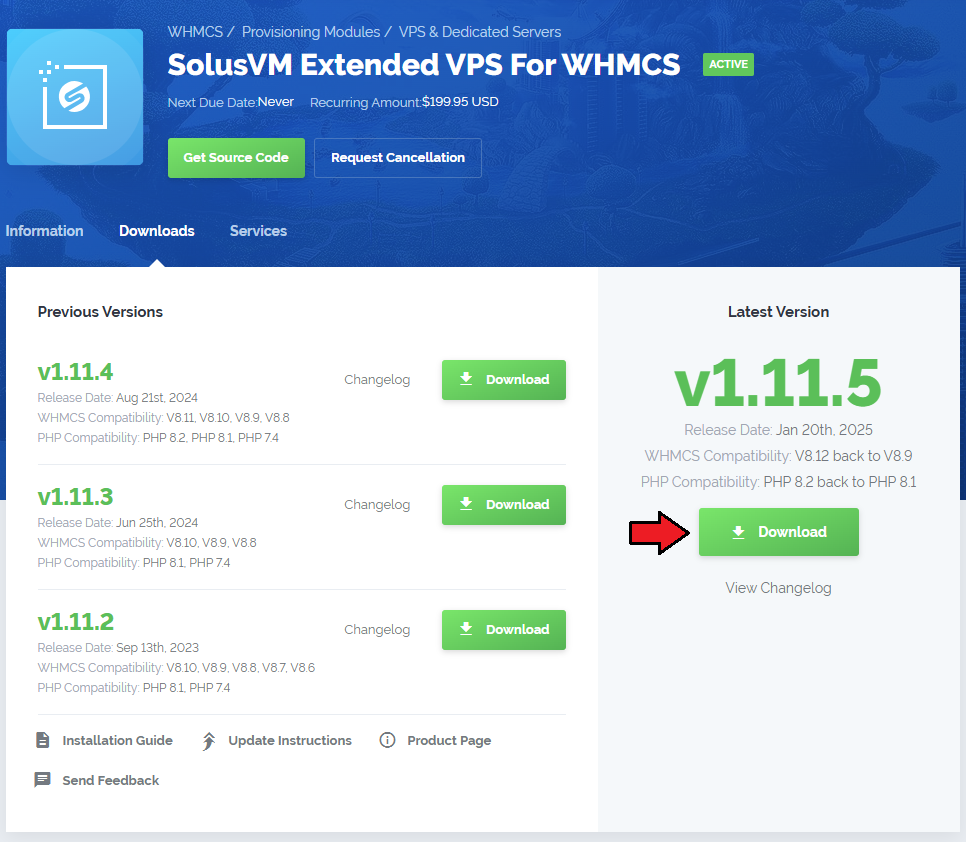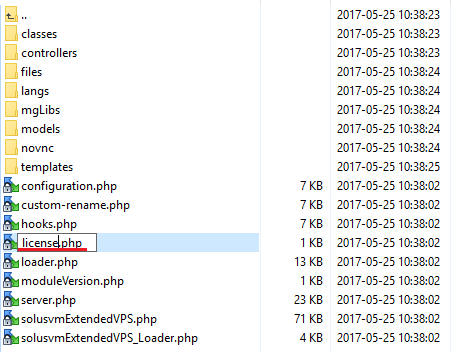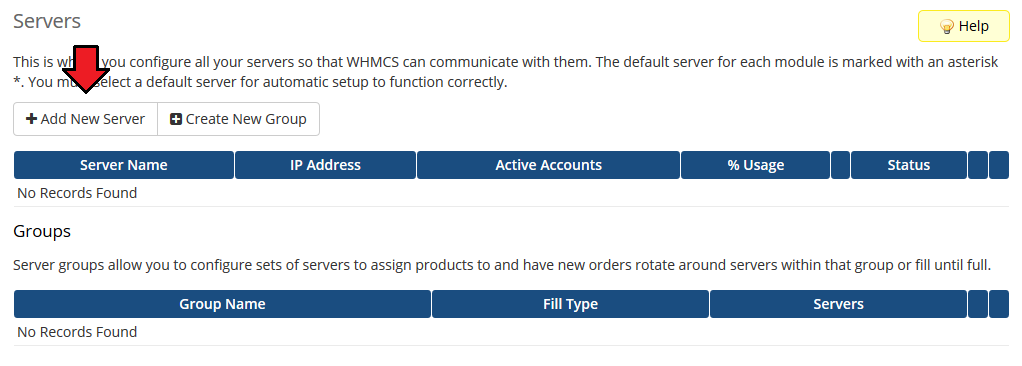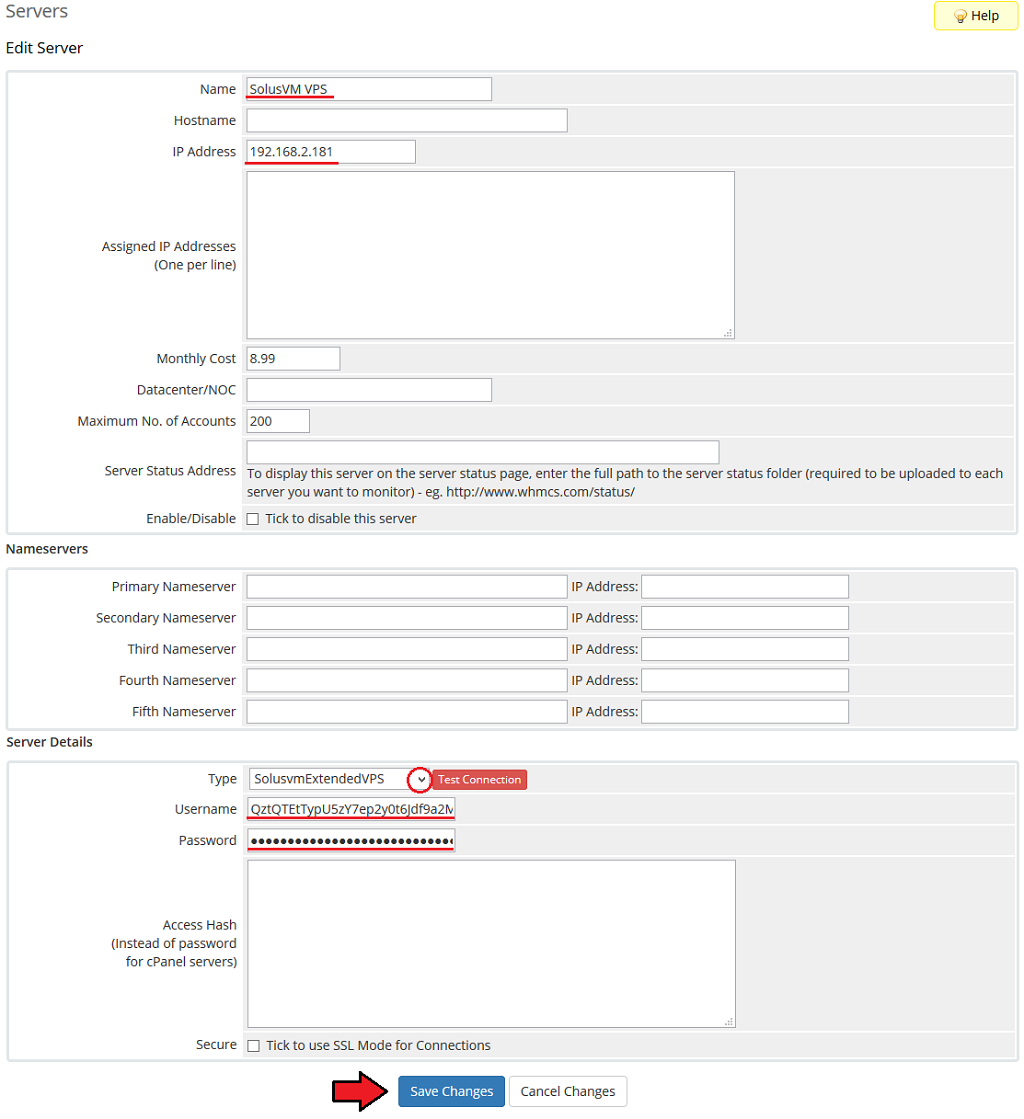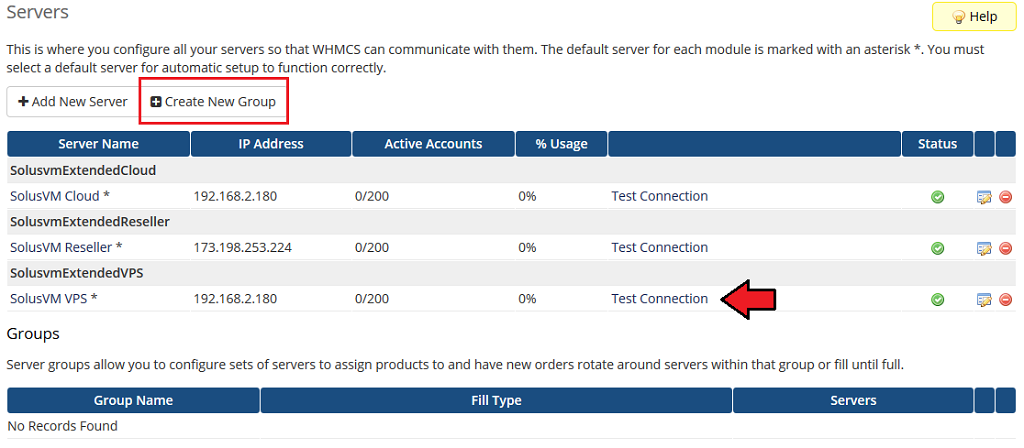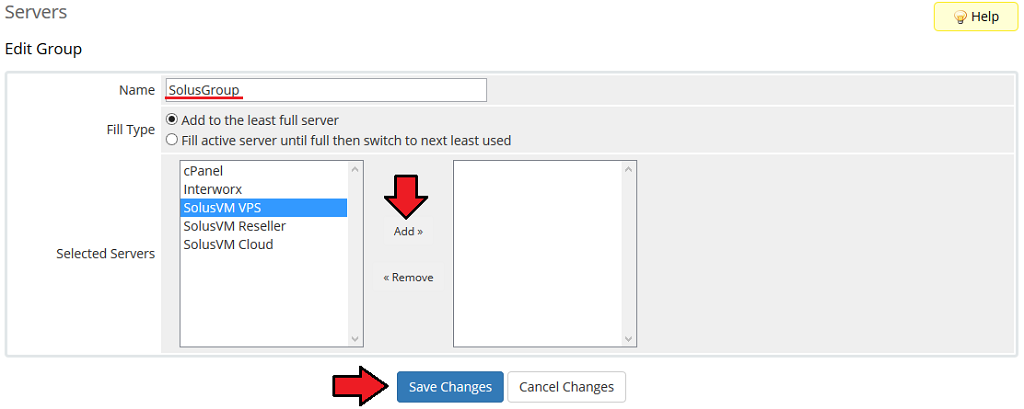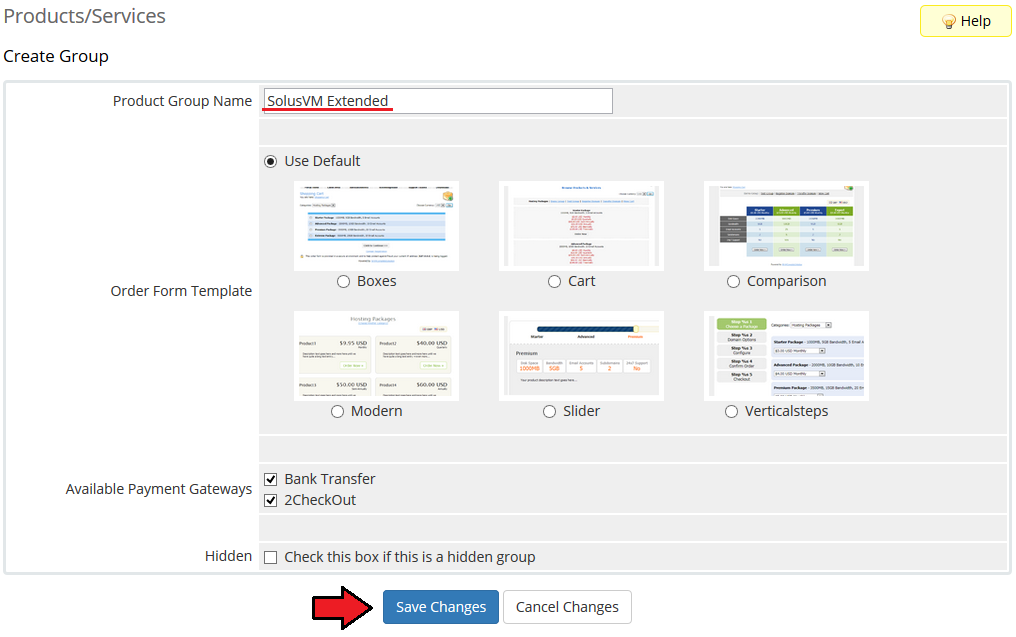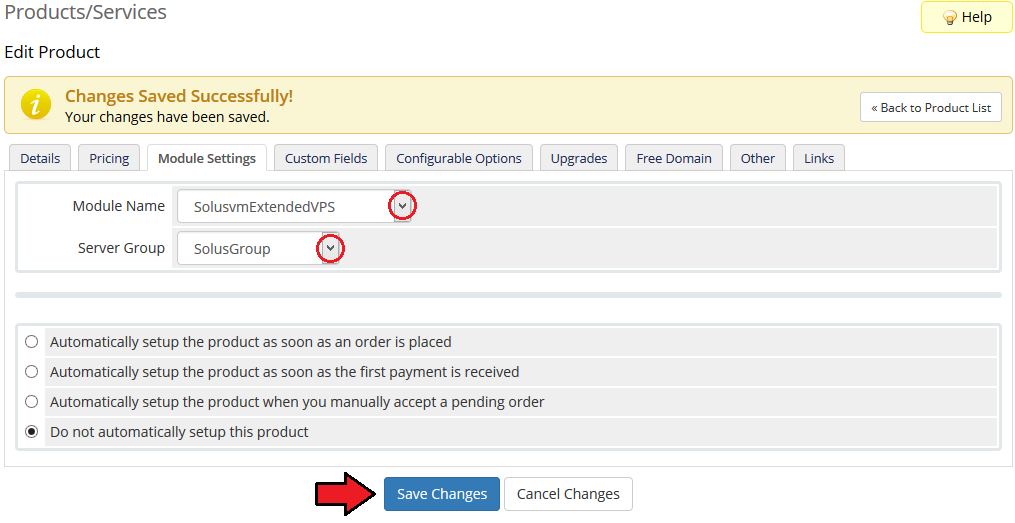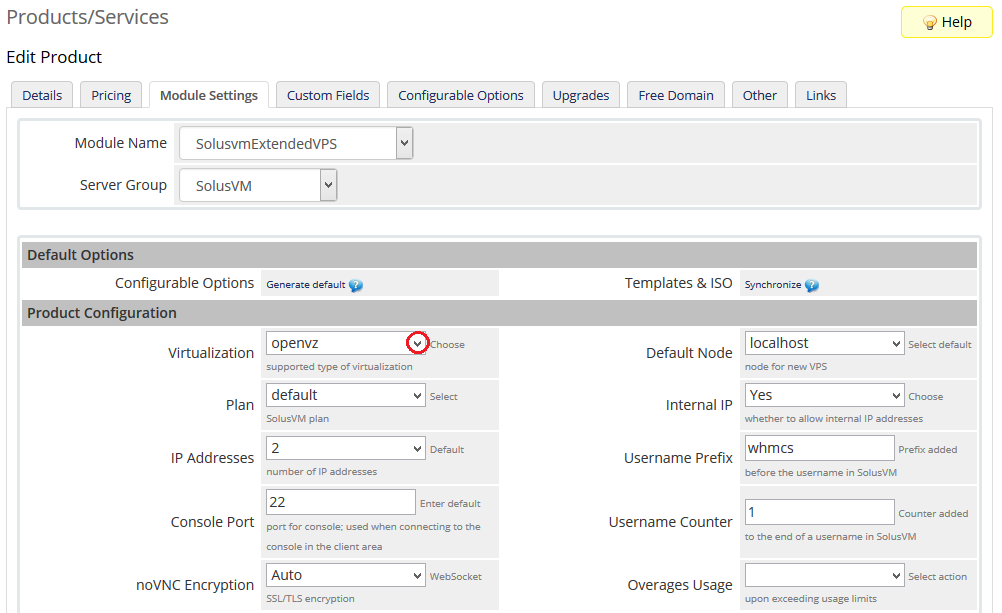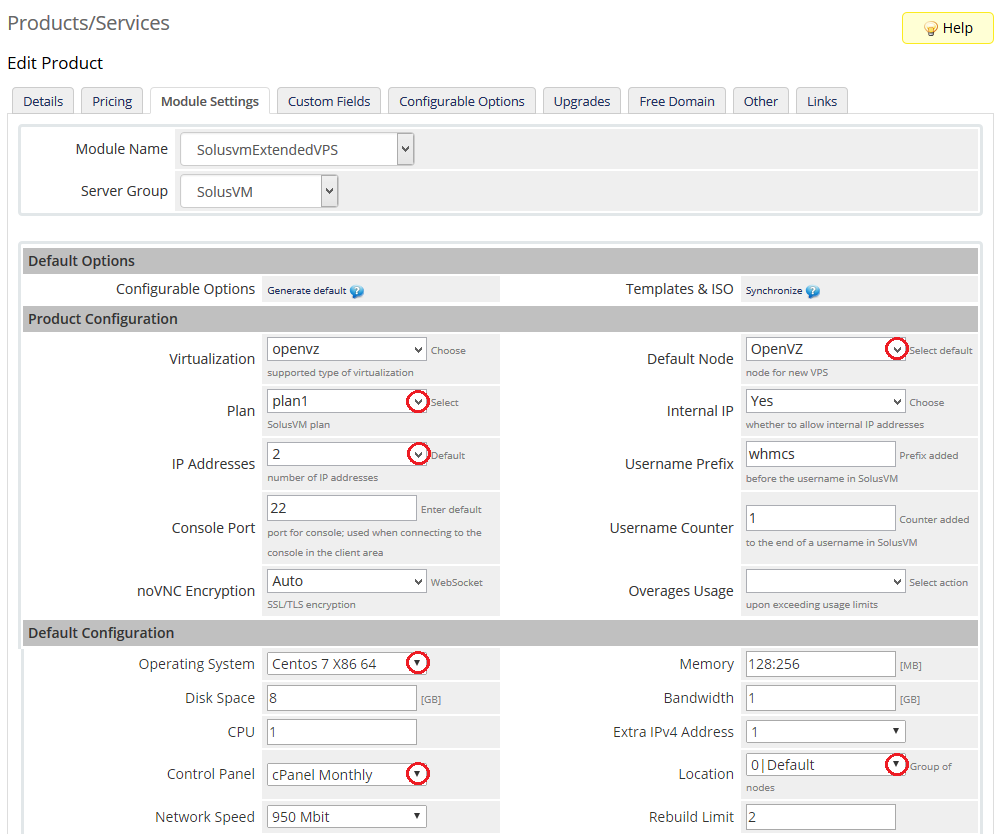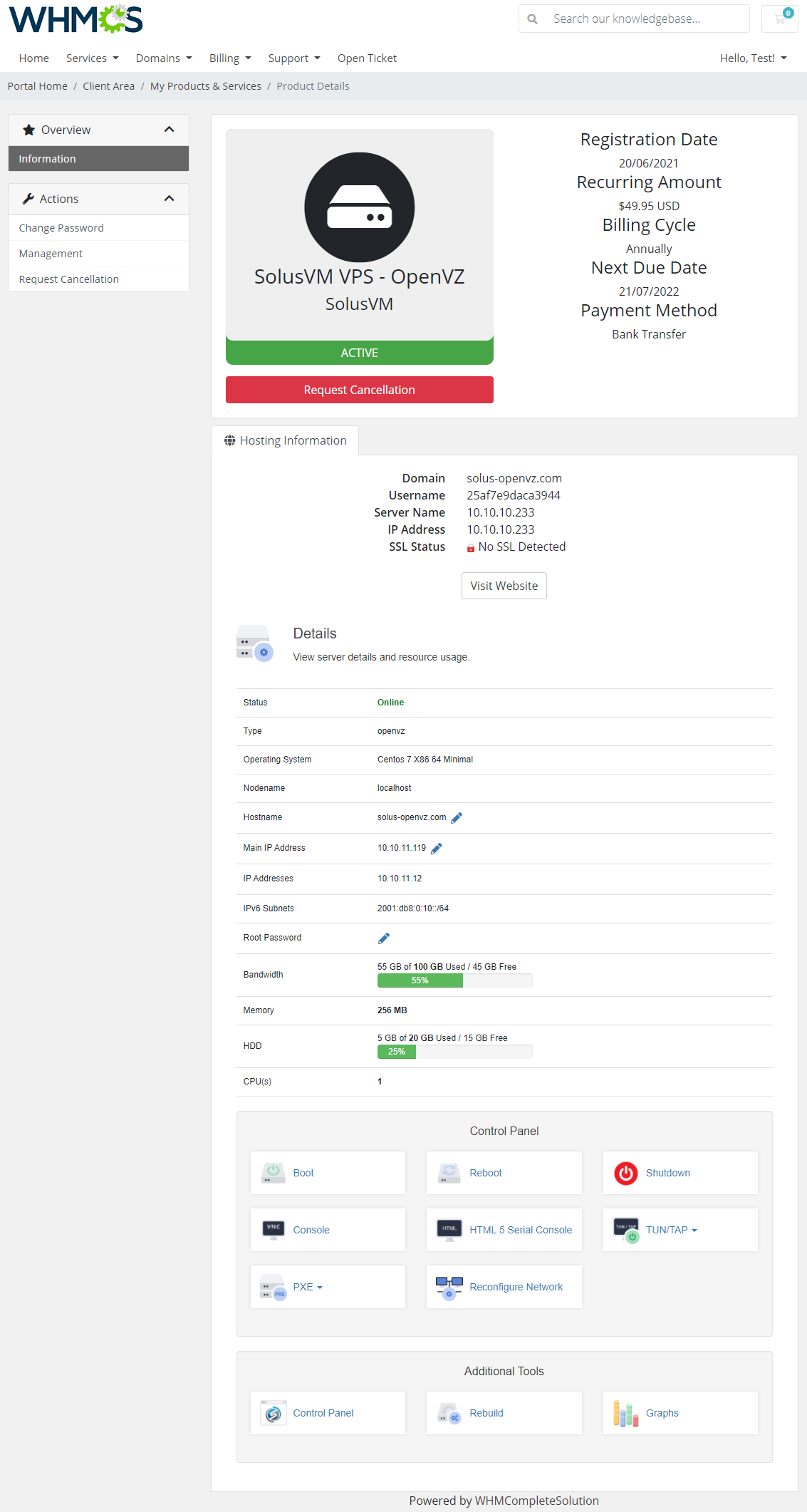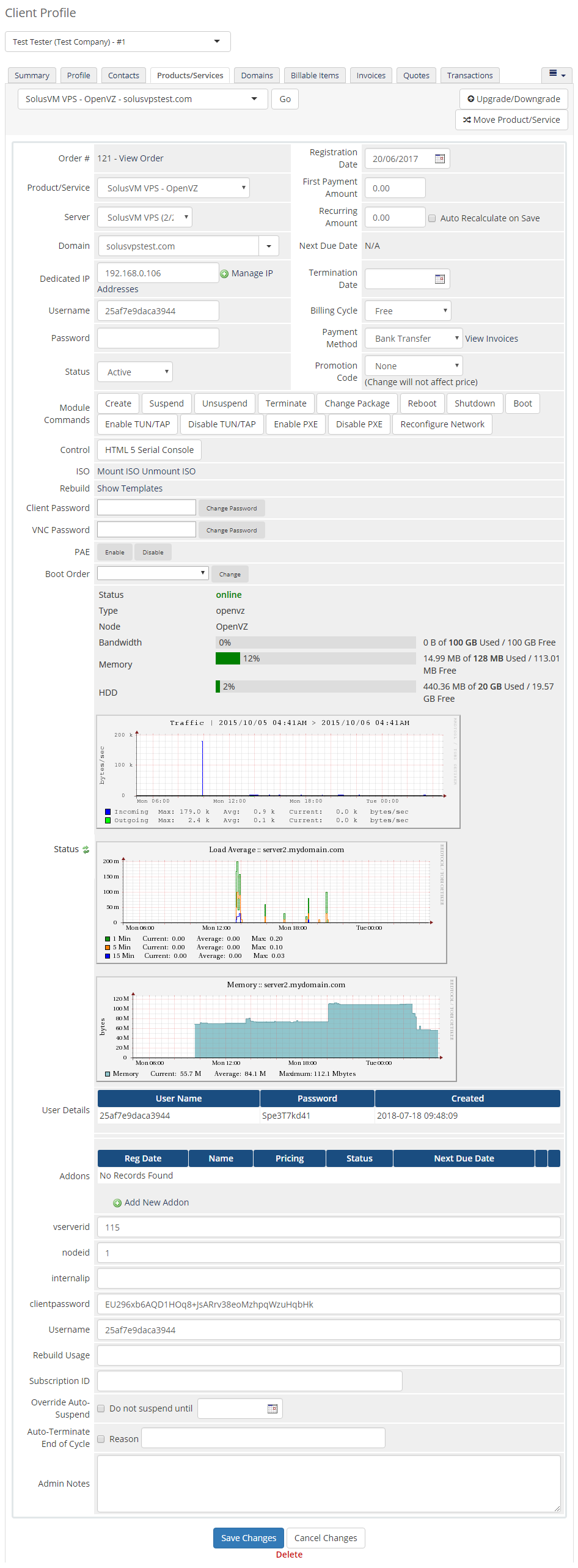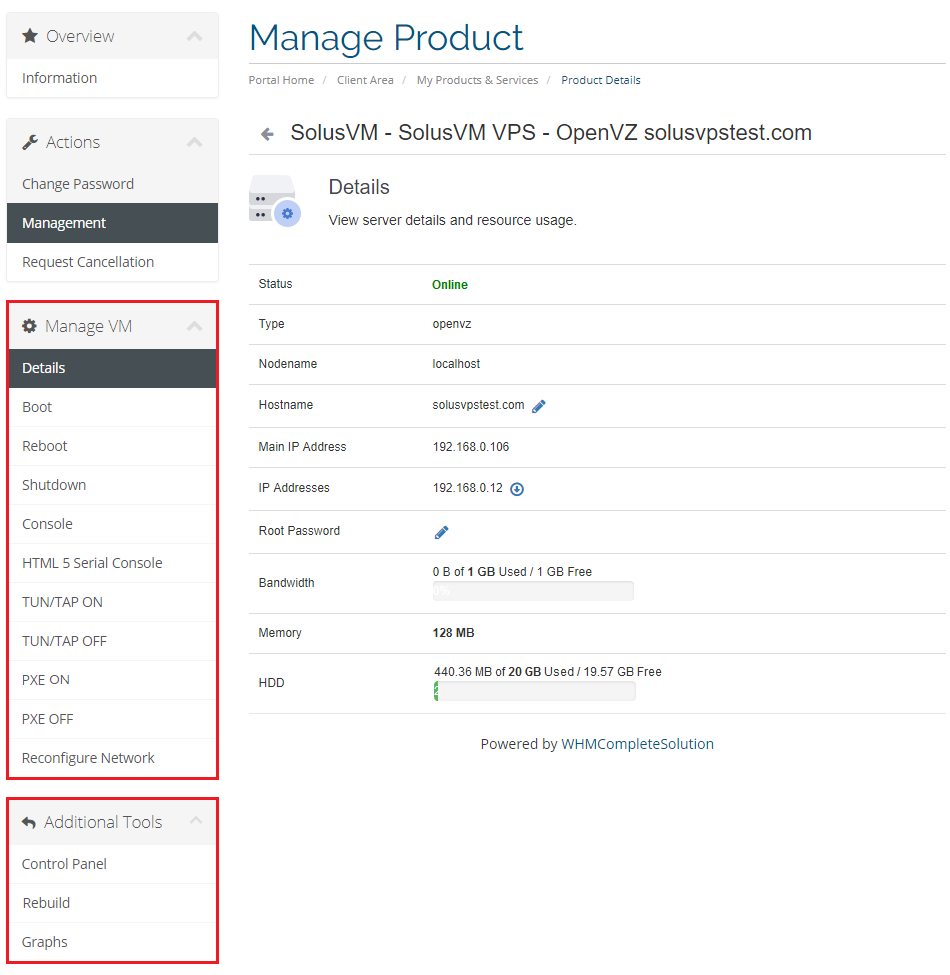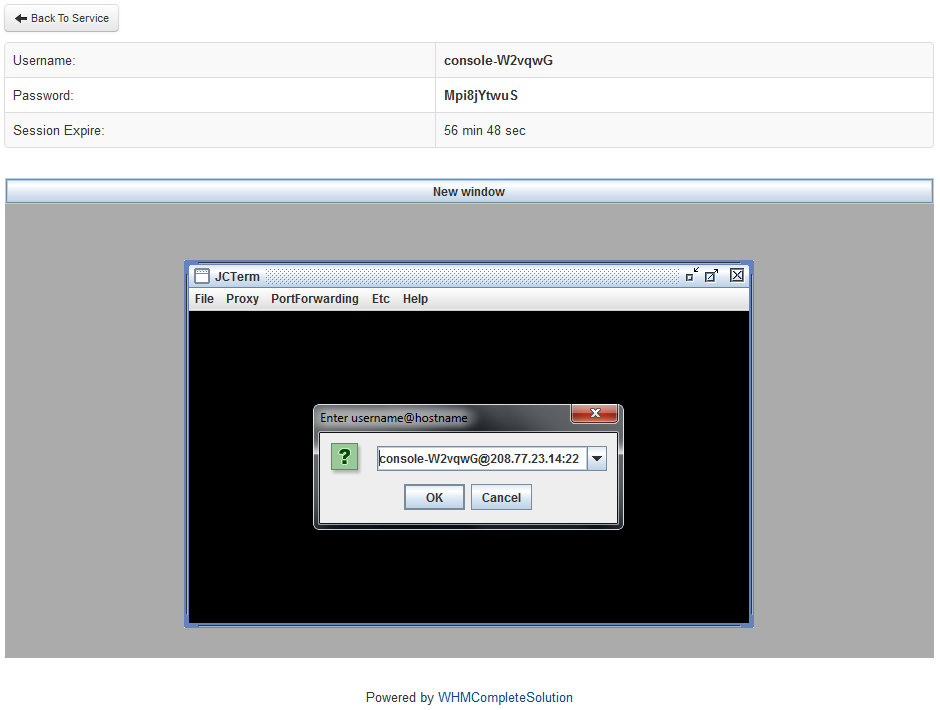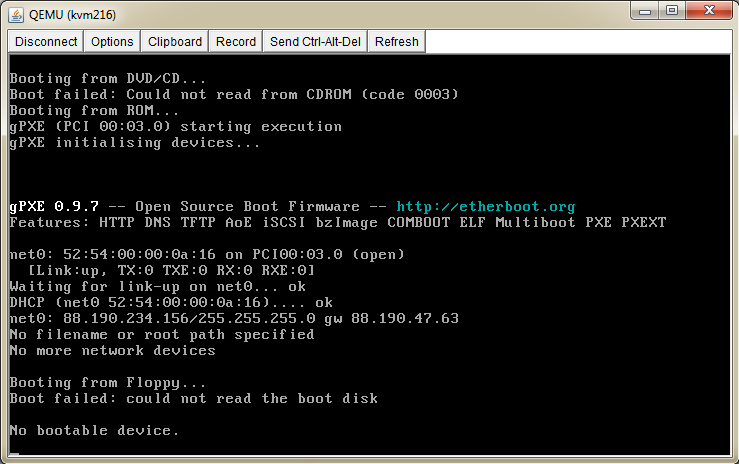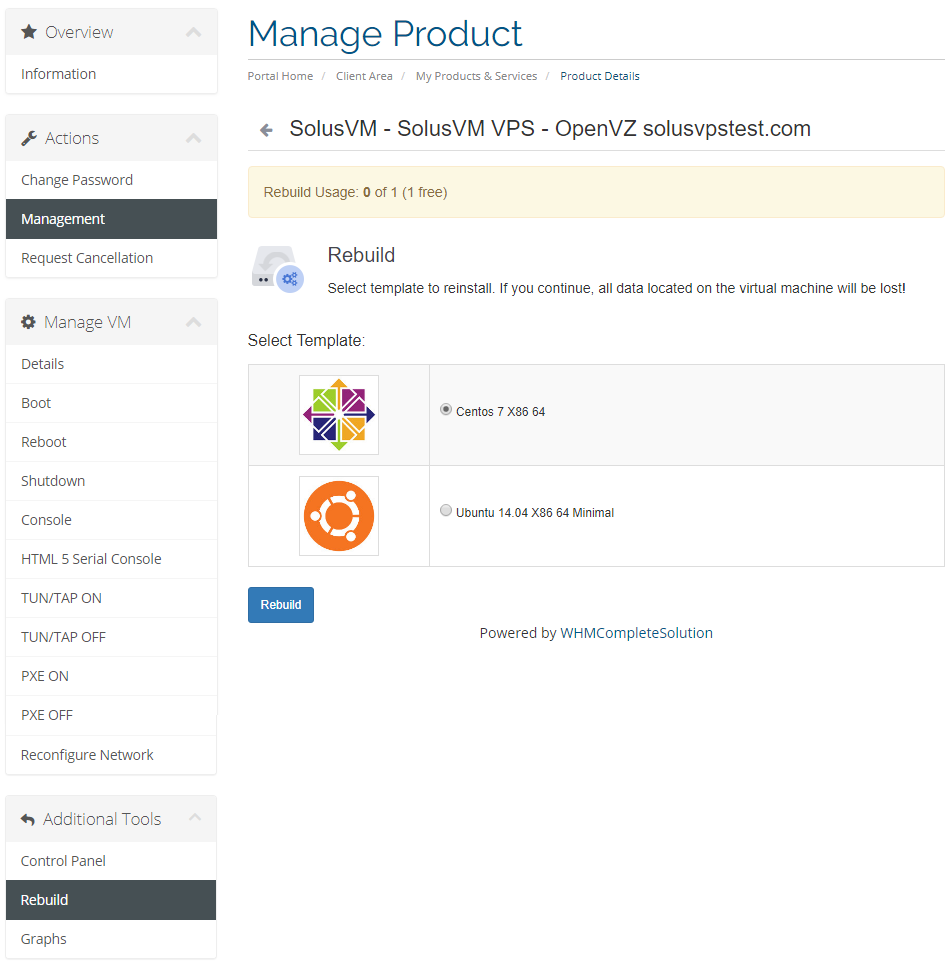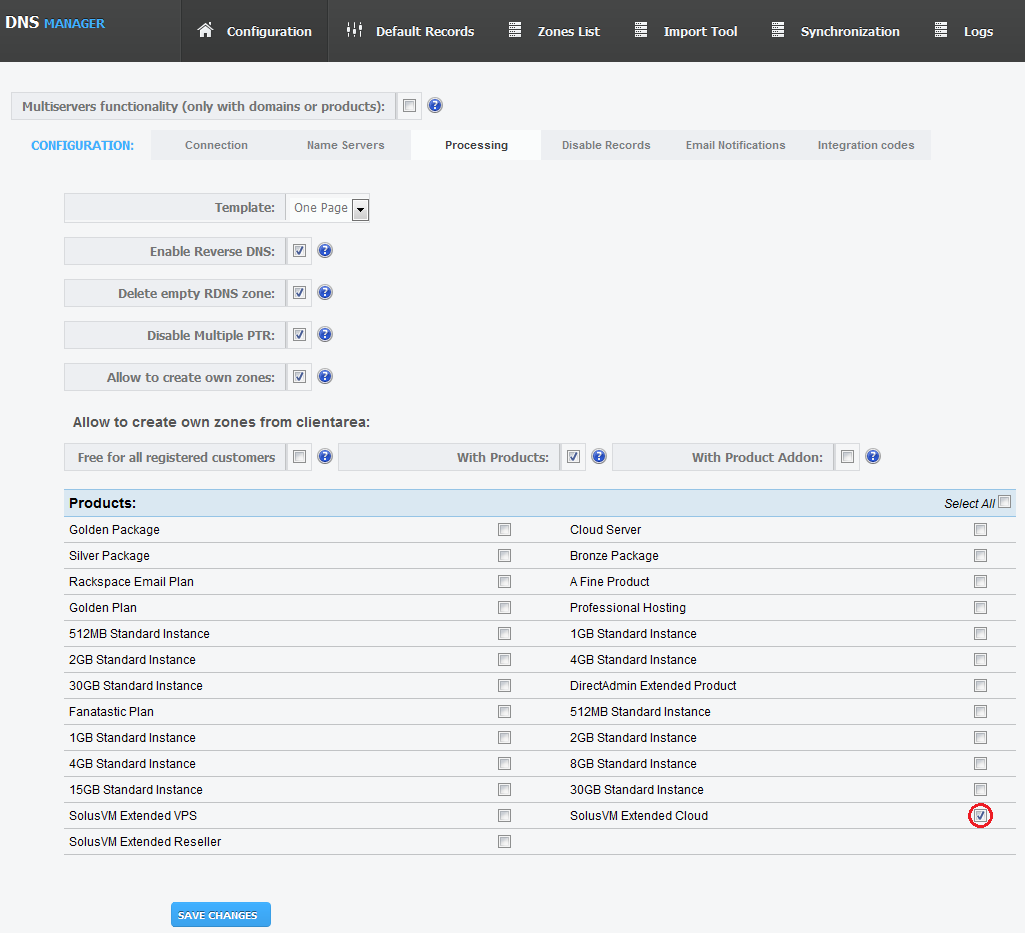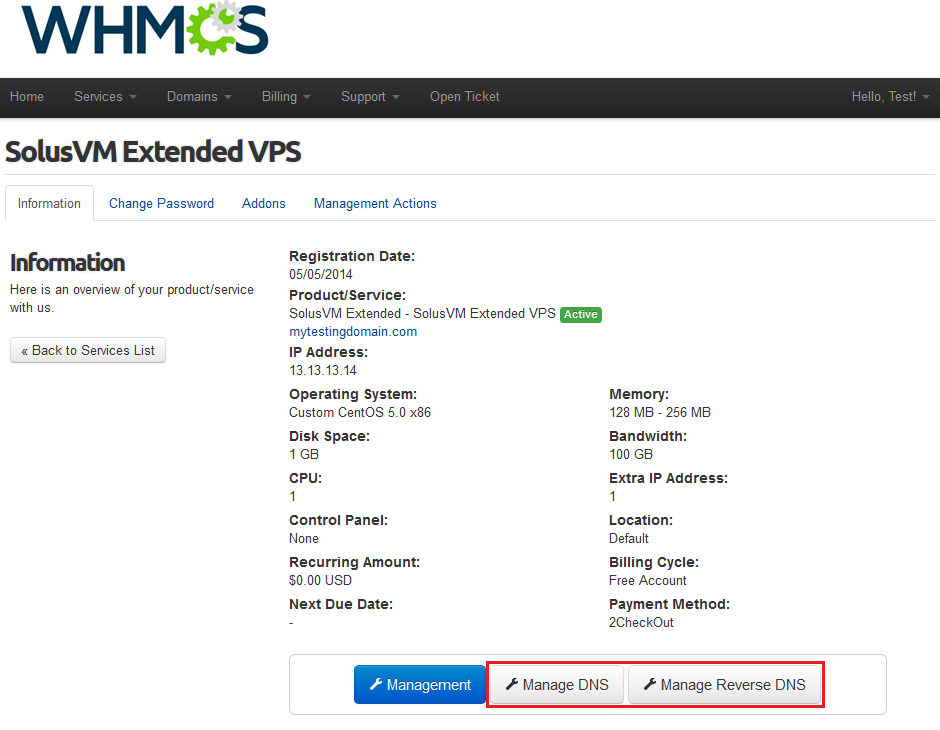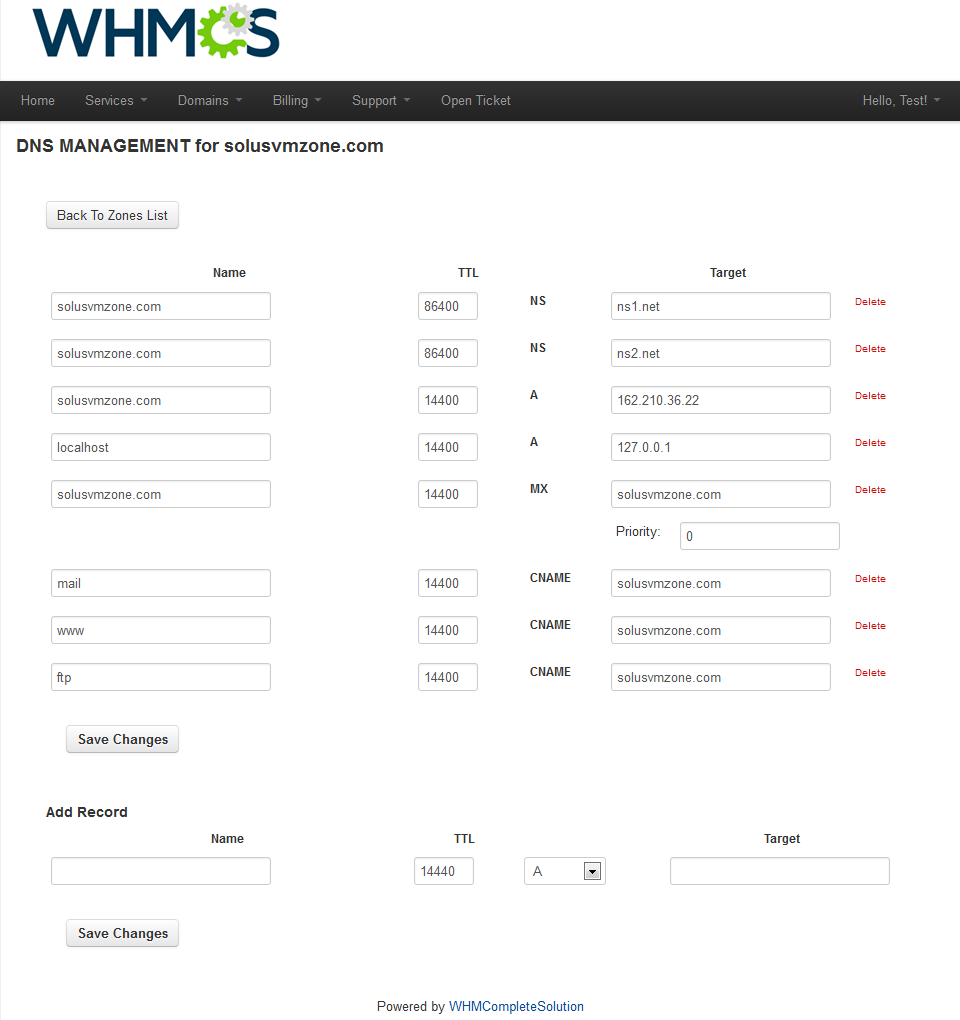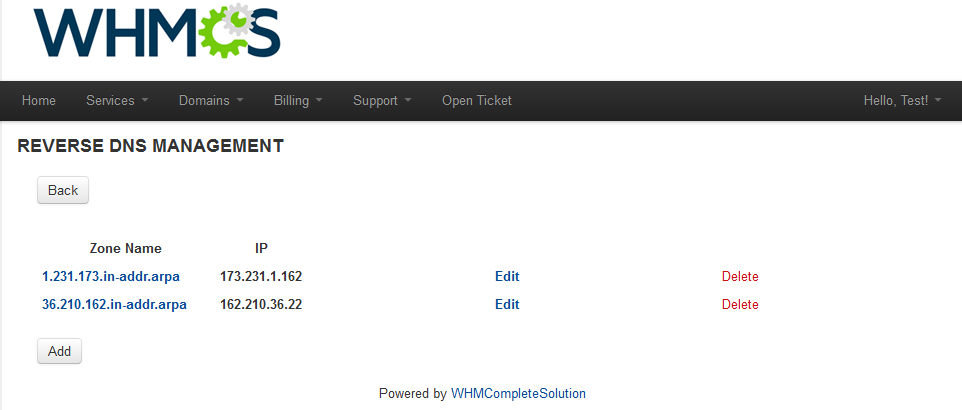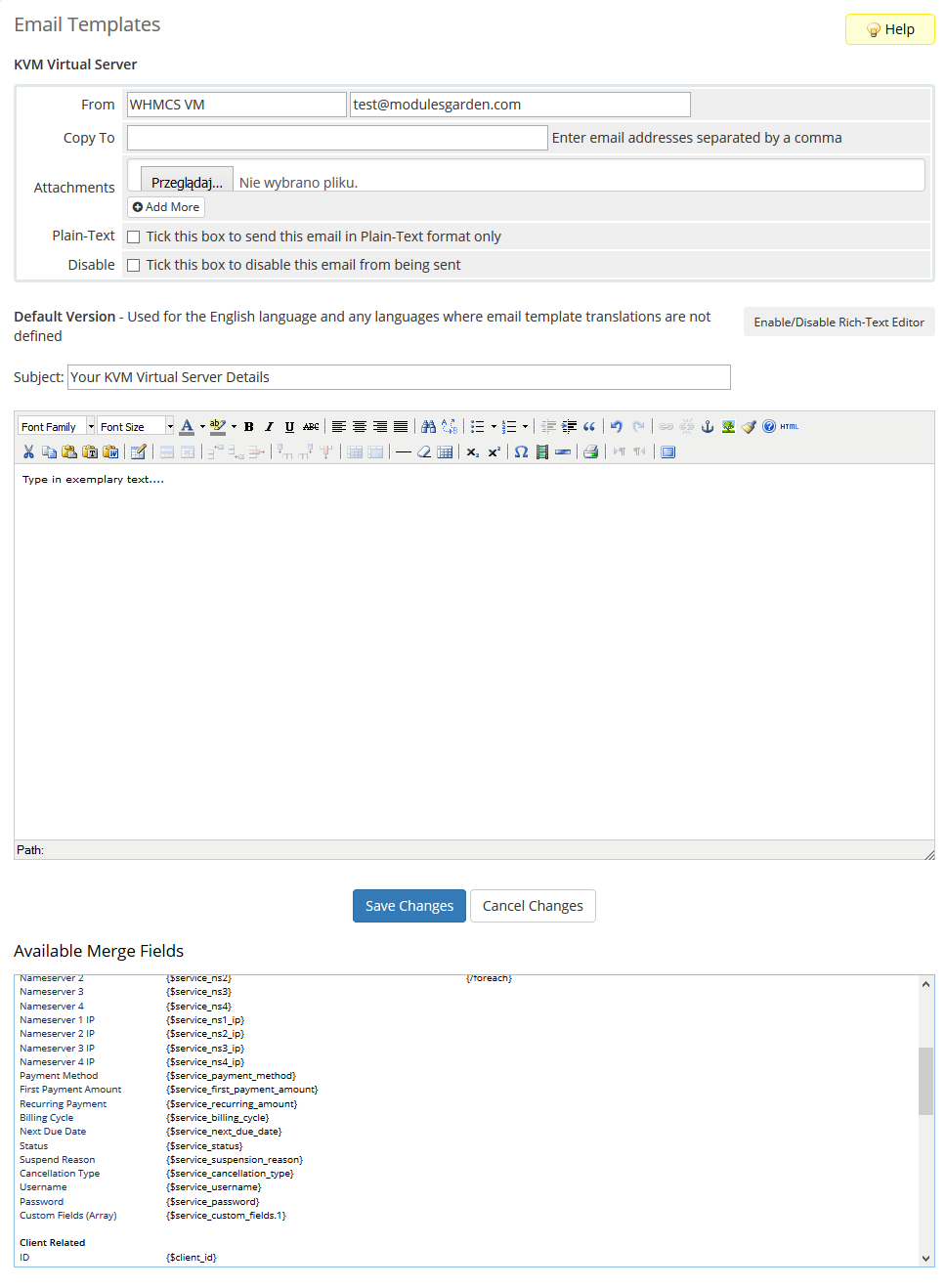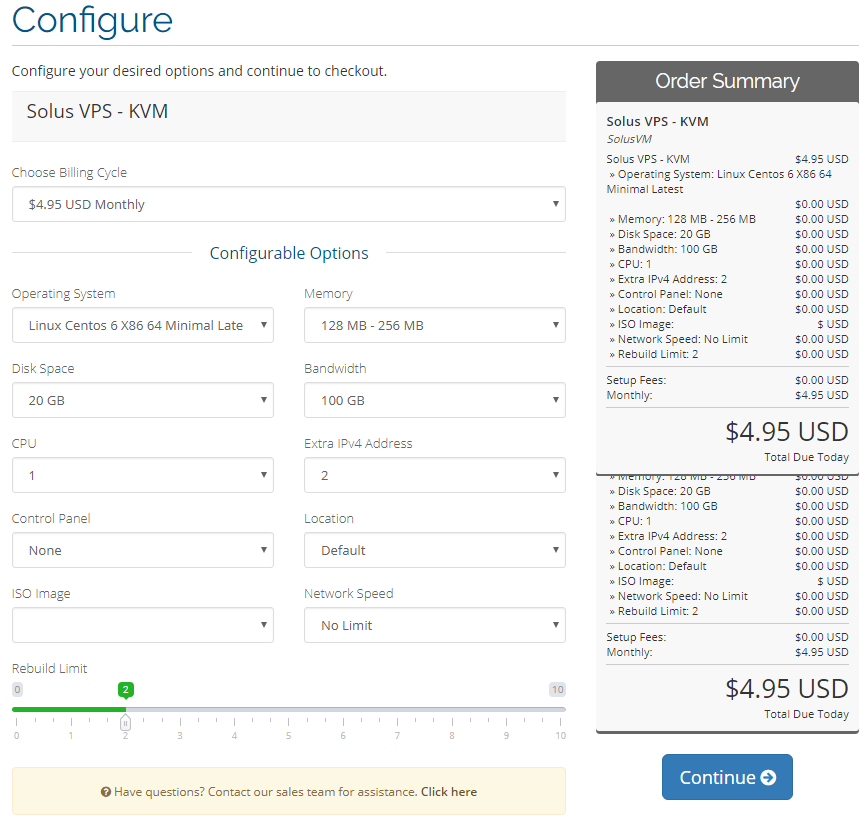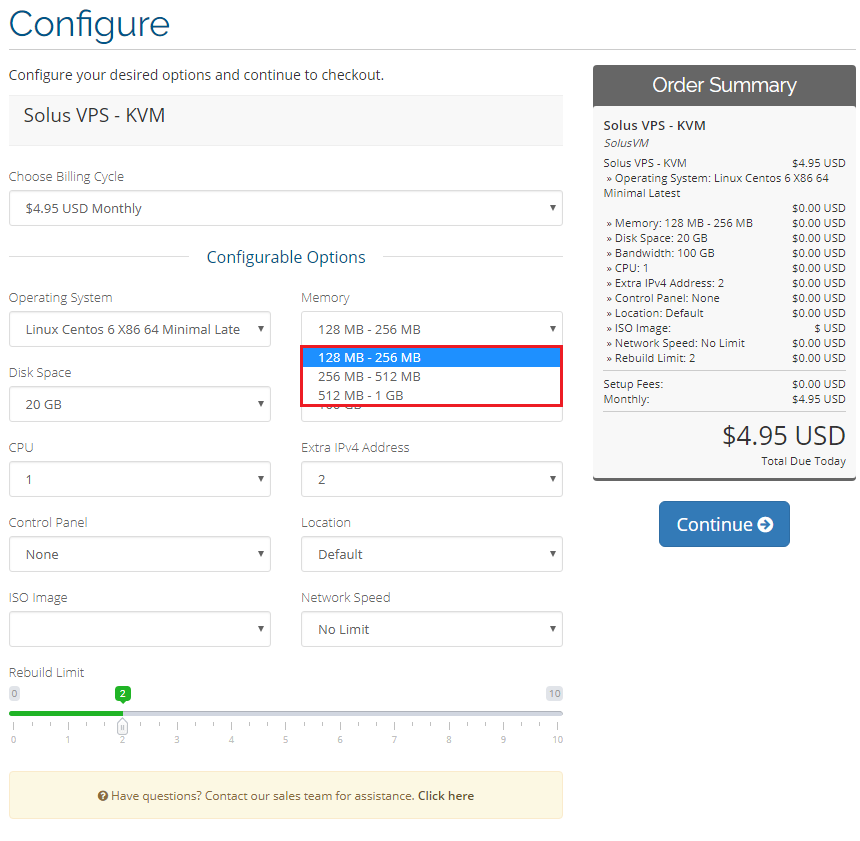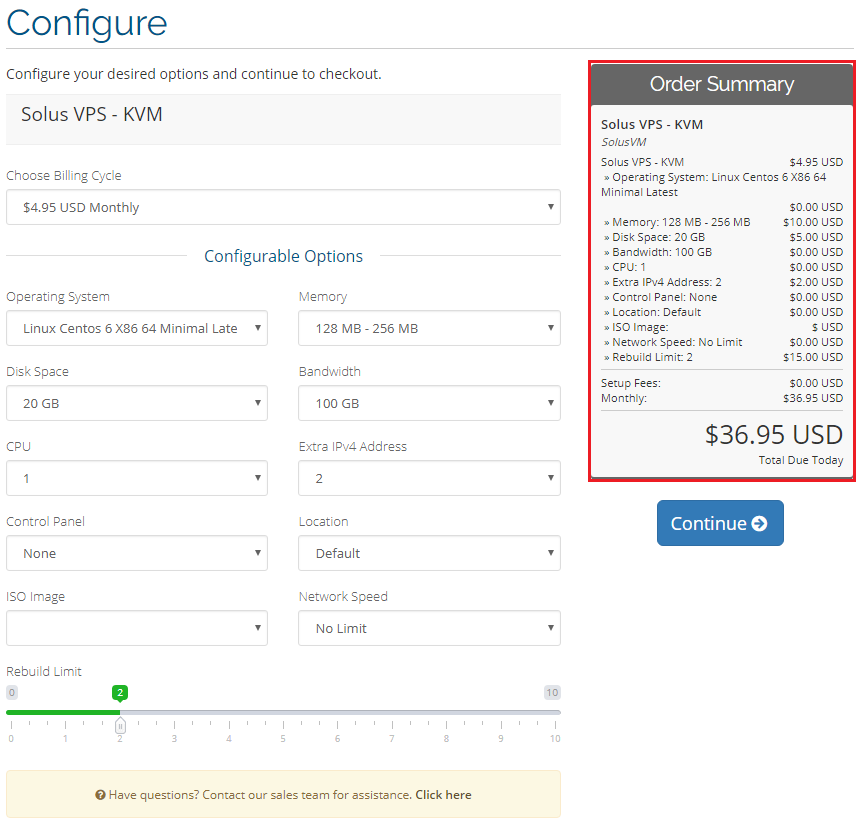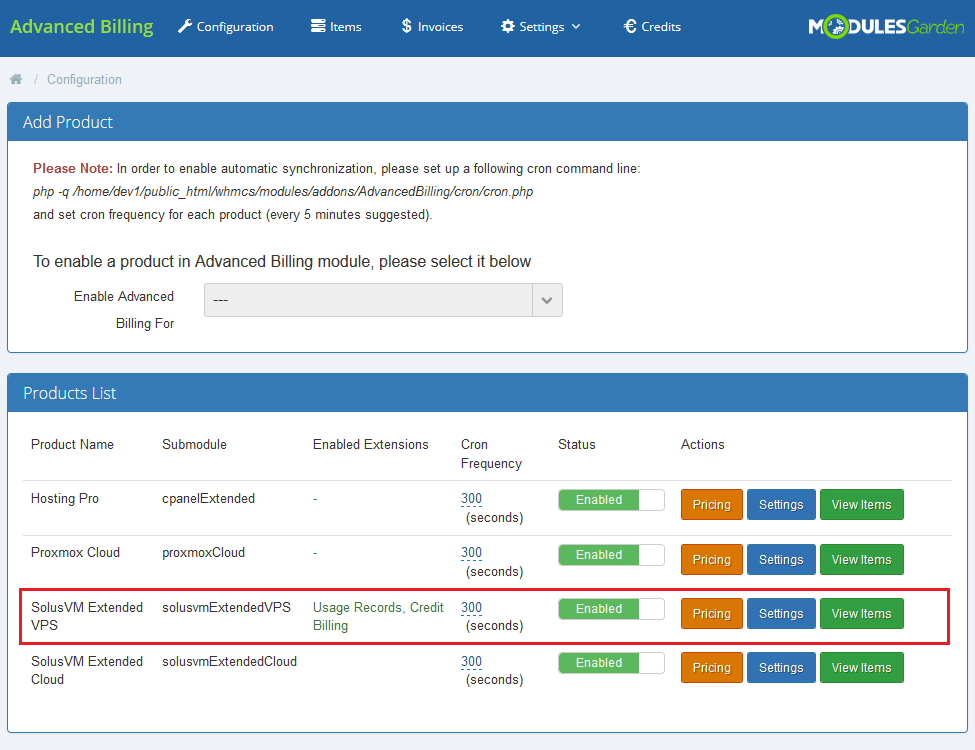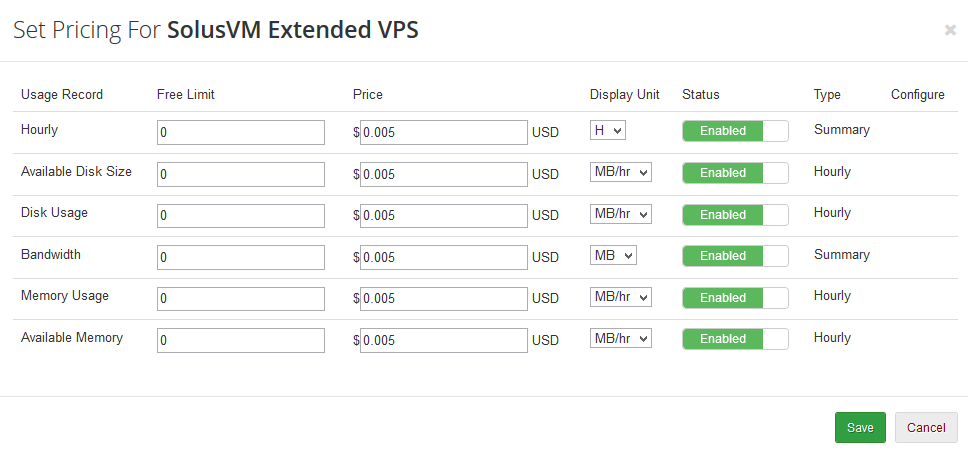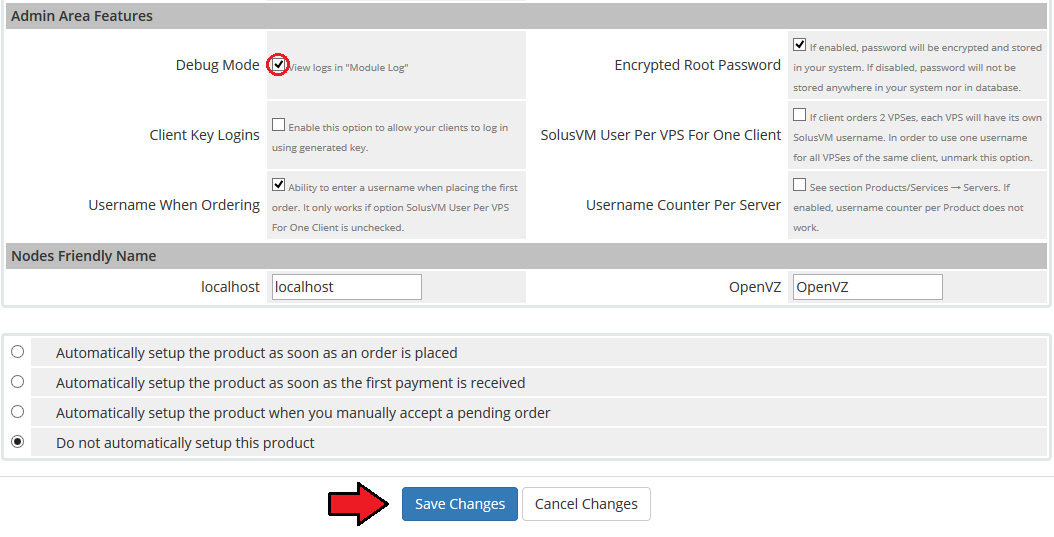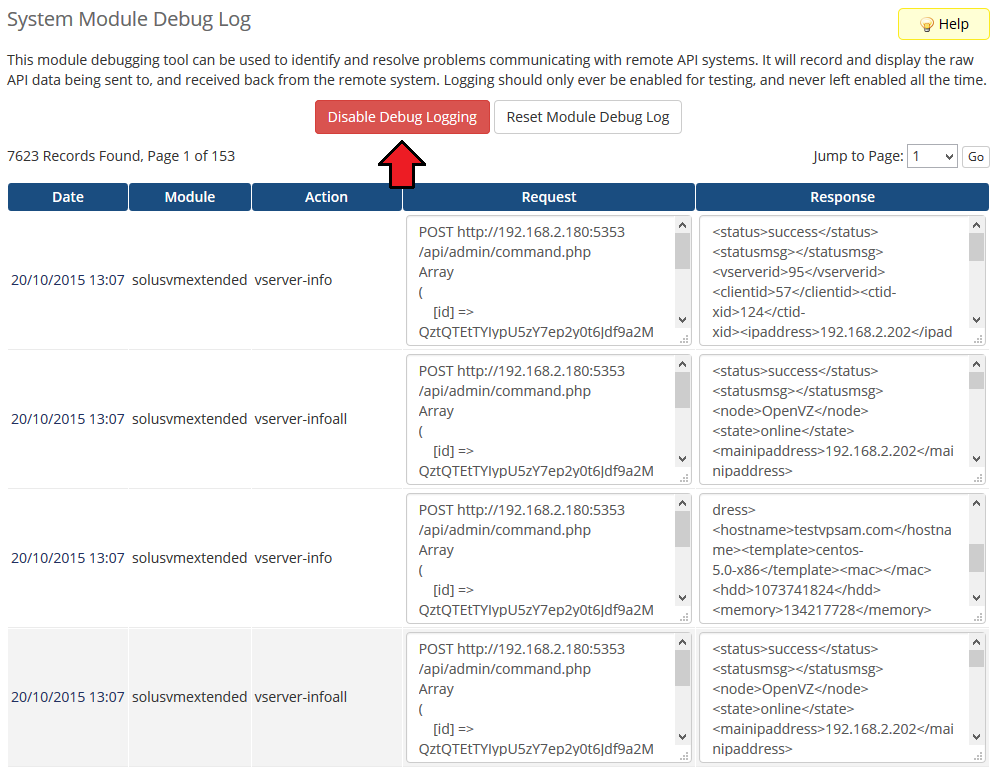SolusVM Extended VPS For WHMCS
From ModulesGarden Wiki
(Difference between revisions)
|
|
| Line 381: |
Line 381: |
| | {| | | {| |
| | |style="padding: 10px 0px 15px 15px;"|If you want to allow your clients to dynamically set server with resources they choose follow these steps.<br /> | | |style="padding: 10px 0px 15px 15px;"|If you want to allow your clients to dynamically set server with resources they choose follow these steps.<br /> |
| − | Firstly, you should have a ready product. For more information on how to create one, head to '' '[http://www.docs.modulesgarden.com/SolusVM_Extended_VPS_For_WHMCS#Configuration_of_Product Configuration of Product]' '' instruction. The final result should be similar to the screen below. | + | Firstly, you should have a ready product. For more information on how to create one, head to '' '[http://www.docs.modulesgarden.com/SolusVM_Extended_VPS_For_WHMCS#Configuration_of_Product Configuration of Product]' '' instruction.<br /> |
| | + | The final result should be similar to the screen below. |
| | |} | | |} |
| | {| | | {| |
Revision as of 13:12, 18 November 2013
SolusVM Extended VPS For WHMCS allows you to automatically provision virtual servers to your clients.
Owing to well-thought module configuration, you will be able to quickly and capably set up ready products in WHMCS and offer them to your customers.
Module lets your clients to conveniently manage virtual servers from your own WHMCS client area. Everything in an easy and enjoyable way.
|
| ✔ Virtual Server Management From The Client Area
|
| ✔ Complete Product Management From The Admin Area
|
| ✔ Dynamic Server Resources Setup With Configurable Options
|
- Provisioning Module Functionality:
| ✔ Suspend/Unsuspend Server
|
| ✔ Upgrade/Downgrade Server And Resources
|
| ✔ Boot/Reboot/Shutdown Server
|
| ✔ Change Password: Root, Client, SSH Console And VNC Console
|
| ✔ Graphs: Traffic, Load, Memory
|
| ✔ Send Email Templates After Server Creation Based On Type
|
| ✔ Possibility To Turn Off Root Password Storing In The System Database
|
- Additional Functionality:
| ✔ Integrated With DNS Manager For WHMCS - Supports PowerDNS (read more)
|
| ✔ Integrated With Advanced Billing For WHMCS - Server Resource Usage Billing (read more)
|
| ✔ Supports WHMCS V5 and Later
|
Installation and Configuration
In this tutorial we will show you how to successfully install SolusVM Extended VPS For WHMCS.
We will guide you step by step through the whole installation and configuration process.
|
| 1. Log in to your client area and download SolusVM Extended VPS For WHMCS.
|
2. Upload and extract the module into the main WHMCS directory.
Files in your WHMCS directory should look like this.
|
3. When you install SolusVM Extended VPS for the first time you have to rename 'license_RENAME.php' file.
File is located at 'modules/servers/solusvmExtendedCloud/license_RENAME.php' . Rename it from 'license_RENAME.php' to 'license.php' .
|
4. In order to configure your license key you have to edit a previously renamed 'license.php' file.
Enter your licence key between quotation marks as presented on the following screen. You can find your license key at your client area → 'My Products' .
|
Configuration of API Access
5. Now we will show you how to configure a new product.
First, log in to your SolusVM admin area, go to 'CONFIGURATION' → 'API Access' and add API User.
|
| 6. Enter your current IP and once again click on 'Add API User' button.
|
Configuration of Server
7. Now log in to your WHMCS admin area. Press 'Setup' → 'Products/Services' → 'Servers' .
|
Afterwards press 'Add New Server' .
|
8. Enter your server name and IP address.
Next, enter your API User ID into 'Username' field and your API User Key into 'Password' field. Choose 'SolusvmExtendedVPS' from a dropdown menu and press 'Save Changes' .
Here you can also provide other server details like nameservers or maximum number of accounts.
|
9. After you configure your server correctly, you will see a following screen.
Test your connection through pressing on 'Test Connection' . Now you need to create a new group for your server. For that purpose press 'Create New Group' .
|
| 10. Enter name, click on your previously created server, press 'Add' then press 'Save Changes' .
|
Configuration of Product
11. In order to create and configure product click on 'Setup' → 'Products/Services' → 'Products/Services' .
If you don't have a product group, click on 'Create a New Group' . If you do, simply go to step 13.
|
| 12. Enter product group name, choose order form template and press 'Save Changes' .
|
13. When you have a product group, you can create your product and assign it with SolusVM Extended VPS. If you already have a product, go to step 15.
To create a product click on 'Create a New Product' .
|
| 14. Afterwards choose your product type and product group from a dropdown menus, enter your product name and press 'Continue' .
|
15. Now go to 'Module Settings' section, choose both 'SolusvmExtendedVPS' and your previously created server group from a dropdown menus.
After you press 'Save Changes' , all the configuration options will load below.
Generate configurable options and custom fields as shown on the following screen.
Keep in mind that without right custom fields, module will not work correctly.
|
16. Configuration of the product is divided into two sections: 'Features Setup' and 'Products Configuration' .
In Features Setup you can select the functionalities you want to offer your customers.
In Product Configuration you need to determine the details of connection between WHMCS product and your SolusVM server.
|
17. Custom fields generated by our module should contain 4 fields: 'vserverid' , 'nodeid' , 'internalip' and 'clientpassword' .
With configurable options you can allow your customers to place orders perfectly tailored to their needs. Our module offers the following configurable options:
|
| You have just finished the installation and configuration of the module. From this moment your customers can start to place orders!
|
Management
| SolusVM Extended VPS For WHMCS offers very intuitive management of virtual servers.
|
Interface
Now let's check the interface of the module in your WHMCS client area. As you can see, everything your customers need is in one place.
Note that the screen below presents the module, right after creation of the product. Charts and graphs will fill with data after use of server resources.
|
The above screen presents a 'Classic Design' introduced in version 1.2. A following screen shows basic design.
You can switch between designs by ticking 'Client Area Classic Design' in 'Module Settings' .
|
You can monitor and manage each product from your WHMCS admin area.
Note that the screen below presents the module, right after creation of the product. Charts and graphs will fill with data after use of server resources.
|
Management of Server
Module allows your customers to easily boot (1), reboot (2), shutdown (3) and delete (4) their servers through pressing specified button.
Product allows also to quickly change hostname (5), root password (6), boot order (7) and enable/disable PAE (8).
Dependant on the chosen virtualization type, module allows your customers to also enable/disable TUN/TAP.
Dependant on the chosen virtualization type, module displays Traffic, Load and Memory graphs.
|
One of the most interesting functionality is SSH console where your clients can remotely manage server. To access it, simply press on the 'Console' button.
|
| Module contains also a VNC Console for KVM and Xen HVM.
|
Rebuild feature allows to change template from available templates list.
To rebuild your server click on 'Rebuild' button, choose template and click on the blue 'Rebuild' button.
|
| Customers can quickly access the VPS Control Panel with just one click to 'Control Panel' button.
|
Management of DNS
When you combine SolusVM Extended VPS For WHMCS With DNS Manager For WHMCS, your clients will be able to manage PowerDNS from the client area.
DNS Manager For WHMCS will allow your customers to manage DNS zones, records and ReverseDNS.
To connect both modules, go to 'Processing' section of DNS Manager, configure the module, tick 'With Products' and choose SolusVM Extended VPS product.
|
| Afterwards, buttons 'Manage DNS' and 'Manage Reverse DNS' will appear in the client area as shown on the screen below.
|
| Dependant on your previously chosen settings, your customers will be able to add, edit and remove DNS zones and records.
|
| Module will also allow your customers to add, edit and remove Reverse DNS zones and records.
|
Management of Email Templates
You can automatically send your customers the emails with details of newly created virtual servers.
To do so, create new email template with 'Product' type and 'Unique Name' specified in SolusVM Documentation, in our case it is 'KVM Virtual Server' .
Use of other template unique names than specified in above documentation makes impossible to send emails.
|
You can paste the email content from SolusVM Documentation or create your own. Owing to our module, you can also use these 4 variables:
{$service_custom_field_rootpassword}, {$service_custom_field_vncip}, {$service_custom_field_vncport} and {$service_custom_field_vncpassword}.
|
Management of Custom Hooks
Our module allows you to use custom hooks. All you have to do is to create some functions using php programming language.
Here you can see possible hooks:
solusvmExtendedVPS_customclientarea($params)
solusvmExtendedVPS_hostname($params)
solusvmExtendedVPS_username($params)
solusvmExtendedVPS_AdminLink($params)
solusvmExtendedVPS_create_one($params)
solusvmExtendedVPS_create_two($params)
solusvmExtendedVPS_create_three($params)
solusvmExtendedVPS_create_four($params)
solusvmExtendedVPS_create_five($params)
solusvmExtendedVPS_terminate_pre($params)
solusvmExtendedVPS_terminate_post_success($params)
solusvmExtendedVPS_terminate_post_error($params)
solusvmExtendedVPS_suspend_pre($params)
solusvmExtendedVPS_suspend_post_success($params)
solusvmExtendedVPS_suspend_post_error($params)
solusvmExtendedVPS_unsuspend_pre($params)
solusvmExtendedVPS_unsuspend_post_success($params)
solusvmExtendedVPS_unsuspend_post_error($params)
solusvmExtendedVPS_changepackage_pre($params)
solusvmExtendedVPS_changepackage_post_success($params)
solusvmExtendedVPS_changepackage_post_error($params)
But before editing any of these hooks you have to rename file 'custom-rename.php' to 'custom.php' .
|

|
Now your hooks are active, but they are empty, so they do nothing. To find details about hooks read file you previously edited.
You can find there hook, information about its time of run, return values and parameters.
For example, if you have no domains but want to have hostname you should set default value for hostname.
To do so, find hook 'solusvmExtendedVPS_hostname($params)' and type 'return 'myhostname.com';' inside of it.
It should look like on the screen below:
|
Dynamic Server Resources Setup With Configurable Options
If you want to allow your clients to dynamically set server with resources they choose follow these steps.
Firstly, you should have a ready product. For more information on how to create one, head to 'Configuration of Product' instruction.
The final result should be similar to the screen below.
|
If automatically generated configurable options do not seem to fill your client needs, you can edit them using this guide to change them.
|
| If you decide to set pricing per server resource ordered, you can find instruction how to proceed here.
|
Management of Billing
When you combine SolusVM Extended VPS For WHMCS with Advanced Billing For WHMCS, you will be able to set up additional billing options.
Module allows you to charge your customers based on the server resources used by them.
|
| With Advanced Billing module, you can also display your customers the current server resource usage and their cost.
|
Update of Products
Our module is entirely compatible with SolusVM Pro module and you can easily upgrade your existing products without losing your settings.
Firstly, go to 'Setup' → 'Products/Services' → 'Products/Services' → 'Module Settings' of your product and switch 'Module Name' from 'Solusvmpro' to 'SolusvmExtendedVPS' .
Afterwards go to 'Setup' → 'Products/Services' → 'Servers' and switch your server type from 'Solusvmpro' to 'SolusvmExtendedVPS' .
Once again go to 'Setup' → 'Products/Services' → 'Products/Services' → 'Module Settings' of your product and make sure that 'Server Group' is set up correctly.
In the last step generate default configurable options and custom fields through clickng on 'Generate default' buttons.
Your SolusVM Extended VPS product is ready to use!
|
Debug Mode
SolusVM Extended VPS is very complex module. Therefore many things might go wrong.
To help you quickly solve various problems usually connected with WHMCS product/server configuration and SolusVM server configuration, we created a 'Debug Mode' .
To enable it, go to 'Module Settings' of your product and tick 'Debug Mode' as shown on the screen below.
|
Afterwards go to 'Utilities' → 'Logs' → 'Module Log' and click on 'Enable Debug Logging' in order to enable it. Button should change value for 'Disable Debug Logging' .
From that moment, each action performed by module will be recorded in the log.
In that way, you can easily check whether module correctly fetches the information about virtual servers, nodes, templates, plans etc.
If it doesn't, that indicates a problem with WHMCS product/server configuration or problem with your SolusVM server.
The following screen presents exemplary module log.
|
| Remember to turn off Debug Mode after you fix the problem.
|
Tips
1. We made every effort to make our module as easy to install, configure and use, as possible. Therefore we paid special attention to displayed messages.
Read carefully each message, follow the instructions and you shall have no problems with using the module.
|
| 2. Operations performed on the virtual servers are not executed immediately. Give your SolusVM server some time for processing the request and execution of operation.
|
Common Problems
1. By default our module connects with SolusVM server on port 5353. If you are using different port, you need to specify it in the 'Hostname' field.
Default port for SSL connections is 5656. To connect on that port enter your hostname as follows: 'yourhostname.com:5656' . Keep in mind that you can connect on any port.
Field below 'Tick to use SSL Mode for Connections' switches connection type between http and https. Note that this is something different from choosing the port to connect.
|
2. The vast majority of problems are connected with misconfigured SolusVM server or misconfigured servers/products in your WHMCS.
First, make sure that your SolusVM server has properly configured virtual servers, nodes, node groups, templates, plans and API access.
In most cases, appropriate SolusVM server configuration guarantees correct operation of the module.
Afterwards check your WHMCS server connection and products settings. If you are certain that everything is correct, use our Debug Mode.
|
| 3. When you have problems with connection, check whether your SELinux or firewall is not blocking ports.
|
